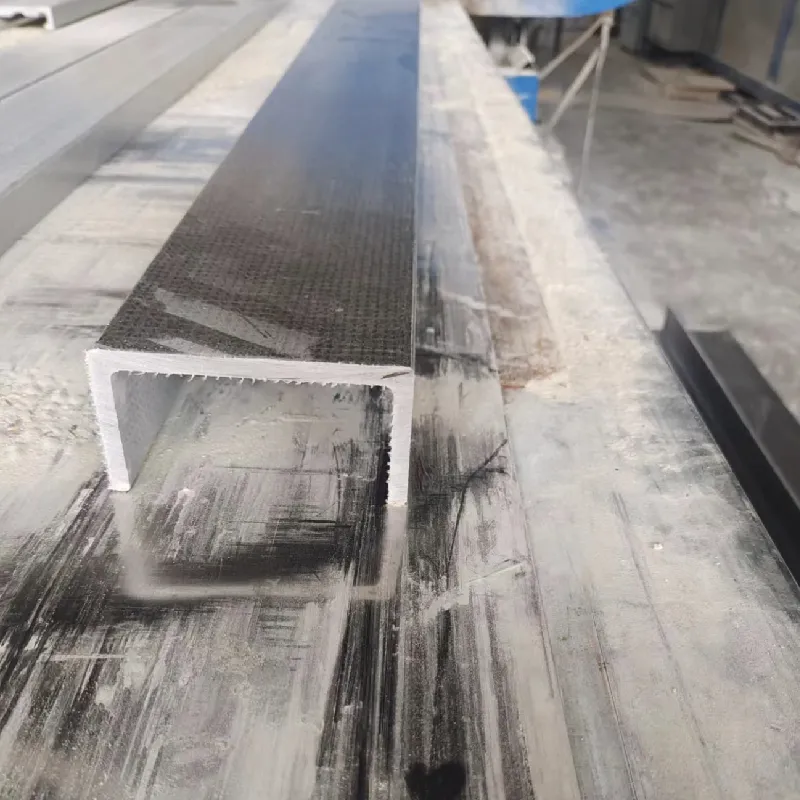loading...
- No. 9, Xingyuan South Street, Dongwaihuan Road, Zaoqiang County, Hengshui, Hebei, China
- admin@zjcomposites.com
- +86 15097380338
- Welcome to visit our website!
Understanding the Structure and Function of Reverse Osmosis Membrane Housings
The Importance of Reverse Osmosis Membrane Housing in Water Purification
Water is an essential resource for life, and ensuring its purity is paramount in our modern world. With the increasing concerns over water quality and the accessibility of clean drinking water, reverse osmosis (RO) systems have become a favored solution. At the heart of these systems lies the reverse osmosis membrane housing, a crucial component that plays a significant role in water purification.
Understanding Reverse Osmosis
Reverse osmosis is a water purification technology that uses a semipermeable membrane to remove ions, molecules, and larger particles from drinking water. The process involves applying pressure to overcome osmotic pressure, forcing water molecules through the membrane while leaving contaminants behind. This method is effective in eliminating various impurities, including salts, heavy metals, and bacteria, thereby providing high-quality drinking water.
Role of Membrane Housing
The membrane housing serves as the protective enclosure for the RO membrane. It is designed to facilitate optimal filtration while safeguarding the membranes from external damage and contamination. Typically made from high-grade materials like PVC, polypropylene, or stainless steel, the housing must withstand high pressures and corrosive environments. Its primary roles include
1. Protection The housing prevents physical damage to the membrane caused by environmental factors or user mishandling. Since RO membranes are delicate and can be easily punctured or torn, the housing acts as a robust shield.
2. Containment The housing keeps the membrane in place, ensuring that water flows through it effectively. A secure fit is critical for proper water flow and efficient filtration, as leaks can lead to contamination of treated water and reduced system performance.
3. Pressure Management Reverse osmosis systems operate under high pressure to push water through the membrane. The housing is engineered to withstand these pressures without deforming or leaking, thereby ensuring consistent performance and reliability.
4. Ease of Maintenance A well-designed membrane housing allows for easy installation and replacement of membranes. Routine maintenance is critical for ensuring the longevity and efficiency of the RO system. Haywire or difficult-to-access housings can lead to neglect of necessary upkeep, ultimately reducing the system's effectiveness.
reverse osmosis membrane housing

Types of Membrane Housing
There are several types of membrane housings available, catering to different applications and system designs. Common configurations include
- Standard Membrane Housings These are widely used in residential and commercial RO systems. They typically house single or multiple membranes and are designed for easy access during maintenance.
- High-Pressure Membrane Housings Used in industrial applications, these housings are built to withstand much higher pressures. They often feature reinforced materials and specialized sealing mechanisms to ensure integrity under challenging conditions.
- Custom Membrane Housings For specific applications or unique system designs, custom housings can be manufactured. They may be tailored to particular dimensions or requirements, ensuring optimal performance based on the specific needs of a project.
The Future of Membrane Housing Technology
As technology advances, so too does the design and functionality of reverse osmosis membrane housing. Innovations focus on improving material strength, enhancing resistance to fouling, and optimizing flow dynamics. Sustainable materials that reduce environmental impact are also gaining popularity, aligning with the global push for eco-friendly technologies.
Furthermore, smart technologies are making their way into water purification systems, including membrane housing. Sensors that monitor pressure and flow rates can provide real-time data on system performance, alerting users to maintenance needs or potential issues before they escalate.
Conclusion
The significance of reverse osmosis membrane housing cannot be understated in the realm of water purification. It is an integral component that ensures the efficient and effective functioning of RO systems, delivering clean and safe drinking water to homes and industries alike. As we continue to address the challenges of water quality and scarcity, investing in high-quality membrane housing will remain essential for optimizing the performance of reverse osmosis technology. By safeguarding the membrane, the housing contributes to a sustainable solution for providing access to potable water in an increasingly complex environmental landscape.
-
GRP Structures: The Future of Lightweight, High-Performance EngineeringNewsJun.20,2025
-
FRP Water Tank: High-Performance Storage for Corrosive and Clean Water SystemsNewsJun.20,2025
-
FRP Square Tube: The New Industry Standard for Chemical and Structural ApplicationsNewsJun.20,2025
-
FRP Pultruded Profiles: The Ultimate Choice for Lightweight Structural StrengthNewsJun.20,2025
-
FRP Handrails: The Safer, Smarter, and Stronger Choice for Modern InfrastructureNewsJun.20,2025
-
FRP Grating: The Smart Solution for Durable, Lightweight Industrial FlooringNewsJun.20,2025
-
Why Choose a Galvanized Water Tank for Your Storage NeedsNewsMay.21,2025
